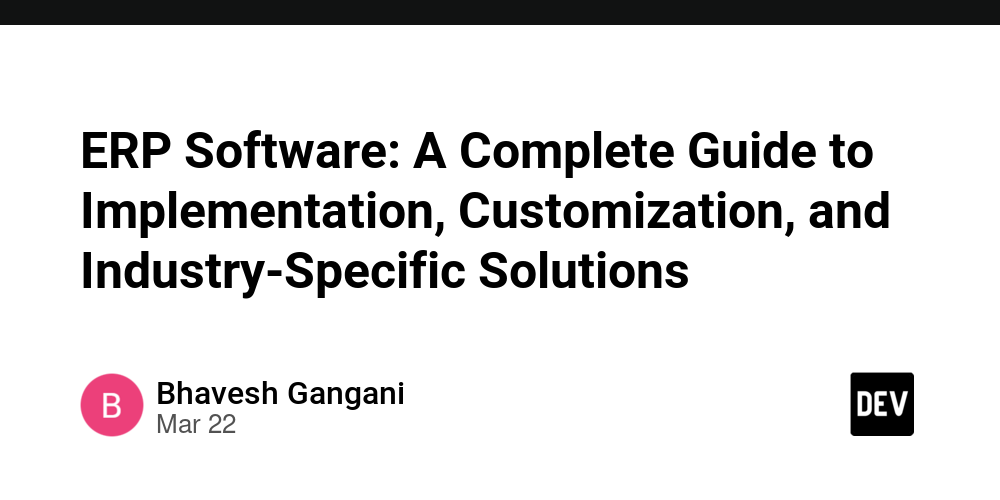Comprehensive Guide to Tracking Sponsorship Earnings: An In-Depth Analysis
Abstract This post offers a comprehensive look at tracking sponsorship earnings—with step‐by‐step guidance that spans strategy development, legal agreements, tracking systems, and reporting. We explore the background, core concepts, practical applications, and challenges of managing sponsorship revenue. Using technical yet accessible language, we dive into best practices and emerging trends for businesses, influencers, event organizers, and non‐profits. Along the way, readers will find useful resources (such as links to articles on Entrepreneur and Forbes) that drive financial transparency and open-source solutions across sectors. Introduction In today’s competitive landscape, managing and tracking sponsorship earnings is not just a financial exercise—it is a strategic imperative. Companies, independent creators, event organizers, and even non-profit organizations rely on sponsorships to fuel their growth. However, maintaining transparency and implementing robust tracking systems is a challenge. In this post, we will discuss how to set up effective strategies, legal agreements, and automated tools to monitor and report sponsorship revenue accurately. For instance, utilizing accounting tools like QuickBooks and Xero can streamline the financial management process. Moreover, practical guides on reviewing and reporting financial data, such as those available on Investopedia, can pave the way for more informed decision-making. Background and Context Sponsorship revenue is a critical income stream that demands accurate tracking. The evolution of digital marketing and the emergence of blockchain technology have transformed how earnings are monitored and reported. Traditional methods of manual bookkeeping are gradually being replaced by automated systems that improve precision while reducing human error. Historically, sponsorship agreements were often negotiated verbally or with minimal written documentation. Today, detailed sponsorship agreements are essential. These agreements define deliverables, payment terms, and tax compliance issues while paving the way for scalability and transparency. As an example of a modern approach to sponsorship, this article on Understanding Sponsorship Revenue emphasizes the need for robust systems to track financial flows. The ecosystem surrounding sponsorship earnings has further expanded with the integration of digital tools and even blockchain concepts. Some projects related to open-source funding and NFT innovations (such as Exploring Web3j NFT Open Source Innovation in the NFT Ecosystem) have inspired communities to rethink revenue tracking and benefit distribution. Core Concepts and Features Effective sponsorship earning tracking relies on several interlinked strategies: 1. Developing a Sponsorship Strategy Every successful tracking system begins with a well-formulated sponsorship strategy. This strategy should include: Objectives: Understanding what you want to achieve from sponsorships. Selecting Compatible Sponsors: Aligning values and strategic goals. Defining Success Metrics: Establishing clear KPIs to measure performance. Read more about strategic approaches on platforms like Forbes. 2. Drafting Detailed Sponsorship Agreements A detailed sponsorship agreement is vital to clarify responsibilities and payment terms. Key elements include: Deliverables: Clear descriptions of what is expected from both parties. Payment Terms: Scheduled payment plans and conditions. Legal Considerations: Provisions that protect both your business and sponsors. For template guidance, refer to resources such as the SBA’s legal templates. 3. Setting Up a Robust Tracking System Utilizing state-of-the-art accounting tools and customized spreadsheets is essential. Automated tools can reduce manual errors and increase scalability. Consider these options: Feature Tool/Resource Benefit Financial Management QuickBooks Streamlined accounting and reporting Cloud Accounting Xero Real-time cloud-based access Custom Reporting Spreadsheets & BI tools Customized financial insights 4. Monitoring, Reviewing, and Reporting Regular updates ensure that your tracking system remains accurate and efficient. Monitoring intervals should include: Monthly Reviews: Evaluate sponsor performance and cash flows. Quarterly Reviews: Refine strategies using in-depth financial analyses. It is imperative to compile these insights into clear and concise reports for stakeholders—a process further explained in guides such as the one on Investopedia. 5. Legal and Tax Compliance Maintaining compliance with tax regulations is non-negotiable. Engaging a tax professional ensures that every sponsorship payment adheres to the law. For data on compliance standards, check out IRS guidelines. Applications and Use Cases To further understand the impact of tracking sponsorship earnings, co

Abstract
This post offers a comprehensive look at tracking sponsorship earnings—with step‐by‐step guidance that spans strategy development, legal agreements, tracking systems, and reporting. We explore the background, core concepts, practical applications, and challenges of managing sponsorship revenue. Using technical yet accessible language, we dive into best practices and emerging trends for businesses, influencers, event organizers, and non‐profits. Along the way, readers will find useful resources (such as links to articles on Entrepreneur and Forbes) that drive financial transparency and open-source solutions across sectors.
Introduction
In today’s competitive landscape, managing and tracking sponsorship earnings is not just a financial exercise—it is a strategic imperative. Companies, independent creators, event organizers, and even non-profit organizations rely on sponsorships to fuel their growth. However, maintaining transparency and implementing robust tracking systems is a challenge. In this post, we will discuss how to set up effective strategies, legal agreements, and automated tools to monitor and report sponsorship revenue accurately.
For instance, utilizing accounting tools like QuickBooks and Xero can streamline the financial management process. Moreover, practical guides on reviewing and reporting financial data, such as those available on Investopedia, can pave the way for more informed decision-making.
Background and Context
Sponsorship revenue is a critical income stream that demands accurate tracking. The evolution of digital marketing and the emergence of blockchain technology have transformed how earnings are monitored and reported. Traditional methods of manual bookkeeping are gradually being replaced by automated systems that improve precision while reducing human error.
Historically, sponsorship agreements were often negotiated verbally or with minimal written documentation. Today, detailed sponsorship agreements are essential. These agreements define deliverables, payment terms, and tax compliance issues while paving the way for scalability and transparency. As an example of a modern approach to sponsorship, this article on Understanding Sponsorship Revenue emphasizes the need for robust systems to track financial flows.
The ecosystem surrounding sponsorship earnings has further expanded with the integration of digital tools and even blockchain concepts. Some projects related to open-source funding and NFT innovations (such as Exploring Web3j NFT Open Source Innovation in the NFT Ecosystem) have inspired communities to rethink revenue tracking and benefit distribution.
Core Concepts and Features
Effective sponsorship earning tracking relies on several interlinked strategies:
1. Developing a Sponsorship Strategy
Every successful tracking system begins with a well-formulated sponsorship strategy. This strategy should include:
- Objectives: Understanding what you want to achieve from sponsorships.
- Selecting Compatible Sponsors: Aligning values and strategic goals.
- Defining Success Metrics: Establishing clear KPIs to measure performance.
Read more about strategic approaches on platforms like Forbes.
2. Drafting Detailed Sponsorship Agreements
A detailed sponsorship agreement is vital to clarify responsibilities and payment terms. Key elements include:
- Deliverables: Clear descriptions of what is expected from both parties.
- Payment Terms: Scheduled payment plans and conditions.
- Legal Considerations: Provisions that protect both your business and sponsors.
For template guidance, refer to resources such as the SBA’s legal templates.
3. Setting Up a Robust Tracking System
Utilizing state-of-the-art accounting tools and customized spreadsheets is essential. Automated tools can reduce manual errors and increase scalability. Consider these options:
| Feature | Tool/Resource | Benefit |
|---|---|---|
| Financial Management | QuickBooks | Streamlined accounting and reporting |
| Cloud Accounting | Xero | Real-time cloud-based access |
| Custom Reporting | Spreadsheets & BI tools | Customized financial insights |
4. Monitoring, Reviewing, and Reporting
Regular updates ensure that your tracking system remains accurate and efficient. Monitoring intervals should include:
- Monthly Reviews: Evaluate sponsor performance and cash flows.
- Quarterly Reviews: Refine strategies using in-depth financial analyses.
It is imperative to compile these insights into clear and concise reports for stakeholders—a process further explained in guides such as the one on Investopedia.
5. Legal and Tax Compliance
Maintaining compliance with tax regulations is non-negotiable. Engaging a tax professional ensures that every sponsorship payment adheres to the law. For data on compliance standards, check out IRS guidelines.
Applications and Use Cases
To further understand the impact of tracking sponsorship earnings, consider these practical examples:
Case Study 1: Influencer Marketing Campaigns
An influencer partnering with multiple brands needs real-time data on sponsor contributions. By implementing tools like QuickBooks, the influencer can:
- Monitor incoming payments.
- Compare performance month-over-month.
- Adjust marketing tactics based on financial feedback.
Case Study 2: Event Sponsorship for Conferences
Event organizers sponsoring international conferences must track earnings across various sponsors, ensuring compliance with state and federal tax laws. Here, detailed agreements and periodic reviews help in:
- Streamlining payments.
- Maintaining sponsor trust through transparency.
- Preparing detailed reports for finance meetings.
Case Study 3: Non-Profit Sponsorships
For non-profits relying heavily on sponsorships, accurate record-keeping is vital for donor transparency. Automated tracking systems promote accountability, allowing these organizations to:
- Keep sponsors updated through regular bulletins.
- Optimize resource allocation.
- Enhance the sustainability of their fundraising efforts.
These examples underscore how a well-managed tracking system can serve diverse sectors from tech startups to established international non-profits.
Challenges and Limitations
While automated systems have brought significant improvements, several challenges persist:
- Technical Complexities: Instigating a new tracking system often involves integrating various software solutions which can be technically demanding.
- Adoption Barriers: Smaller organizations or individual creators might find it challenging to adopt advanced systems without proper training.
- Data Integrity: Maintaining accurate records demands constant vigilance. Any discrepancies can lead to financial misreporting and potential legal complications.
- Scalability Issues: As sponsoring activities increase, systems must be robust and adaptable enough to manage higher volumes of data.
Addressing these challenges may require adopting best practices such as maintaining transparency, using automation, and fostering continuous training for staff. For further insights on industry specifics, see Supporting the Builders Open Source Developer Sponsorship.
Future Outlook and Innovations
The future of sponsorship earnings tracking is promising, with innovations on the horizon that could reshape the way earnings are managed. Key trends include:
- Blockchain Integration: Blockchain technology is revolutionizing financial transparency. Its decentralized nature enhances data security, making it easier to track sponsorship earnings across multiple channels.
- Smart Contract Automation: By automating payments through smart contracts, organizations can reduce human errors and increase trust among sponsors.
- Artificial Intelligence: AI-driven analytics can predict trends and suggest improvements in sponsorship strategies by analyzing historical data.
- Interoperability Across Platforms: As companies and influencers collaborate more globally, systems that can integrate multiple financial platforms will become increasingly important.
Emerging projects—such as those discussed in Arbitrum: Pioneering Open Source in Blockchain—are already setting new benchmarks for how decentralized platforms handle sponsorship revenues. These advancements promise greater efficiency and accuracy as organizations prepare for a blockchain-powered economy.
Best Practices for Effective Tracking
To sum up, here are some key best practices that can drive success:
- Maintain Transparency: Regularly update sponsors on earnings and deliverables.
- Automate Processes: Utilize modern tools to minimize manual errors.
- Establish Feedback Loops: Create channels for sponsors to provide feedback to refine strategies.
- Invest in Staff Training: Ensure your team is well-versed in using tracking tools.
- Plan for Scalability: Choose systems that can grow with your business needs.
A bullet list summarizing these best practices:
- Transparency with Sponsors
- Automation of Financial Processes
- Regular Monitoring and Reporting
- Legal and Tax Compliance
- Scalability and Future-Proof Designs
Summary
Effective management of sponsorship earnings is crucial in today’s digital economy. By developing a solid sponsorship strategy, drafting detailed agreements, and using advanced tracking systems, organizations can ensure financial transparency and operational efficiency. This guide has explored the background, core principles, use cases, challenges, and future trends in tracking sponsorship revenue.
Adopting automation via cloud-based accounting tools like QuickBooks and platforms like Xero enables real-time data insights that are vital in today’s fast-paced market. Additionally, integrating technologies such as blockchain and smart contracts will further revolutionize how earnings are tracked in the near future.
For those interested in further exploring these topics, consider reading additional articles on sponsorship strategy and financial reviews. Notable examples include the Entrepreneur overview on sponsorship revenue and guides available through Forbes.
Projects in the open-source ecosystem and blockchain space, along with insights from the Dev.to community such as Arbitrum’s role in fostering open-source innovation and sustainable funding in open-source projects, also illustrate how diversified revenue streams can benefit from meticulous sponsorship tracking.
By following the guidelines set out in this post—supported by detailed reporting, constant monitoring, and the integration of emerging technologies—organizations can forge sustainable relationships with their sponsors and foster a culture of continuous improvement. As the financial landscape shifts towards more decentralized and transparent systems, tracking sponsorship earnings effectively will remain a cornerstone of strategic business management.
In summary, the key takeaways for successful sponsorship revenue tracking are:
| Aspect | Key Consideration |
|---|---|
| Strategy Development | Clear objectives, sponsor compatibility, KPIs |
| Legal Agreements | Detailed contracts, clear deliverables, compliance |
| Tracking Systems | Automated tools, cloud-based integrations |
| Regular Reporting | Monthly and quarterly reviews, clear documentation |
| Future Innovations | Blockchain, smart contracts, AI analytics |
By embracing these methods, businesses can not only ensure legal and tax compliance but also improve stakeholder relationships and drive overall growth. With careful planning and execution based on best practices, sponsorship revenue tracking can become a powerful tool to propel your organization toward a more financially transparent future.
Stay updated, be transparent, and continuously innovate—this is the future of sponsorship earnings tracking.
We hope you found this in-depth guide valuable and inspiring. For more insights and updates on technology, blockchain integration, and open-source funding, continue exploring our blog and recommended resources. Happy tracking!















































































